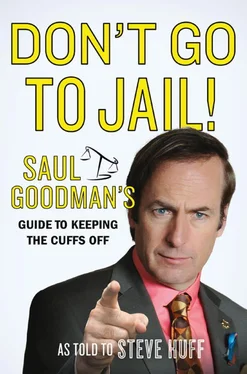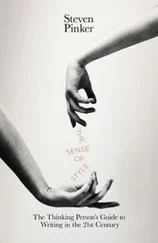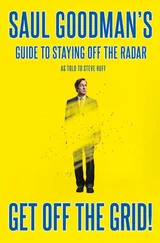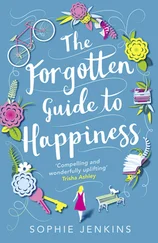Assuming you’ve hired a lawyer, I’ll address a practical aspect: money. You don’t need the Oracle to tell you that with a murder charge of any kind—malice, manslaughter, felony, whatever—getting a good attorney suddenly becomes a more crucial investment than that IRA you’ve been working on since undergrad.
The good counselors aren’t necessarily affordable. Then again, if they think the case is winnable, and, double bonus, if the case is also notable, they may work with you at least in how they’ll accept payment. Most firms bill for hours, but it’s not unreasonable to ask for a ballpark figure, a lump-sum fee. A case with simple elements that seems like a pretty sure win may not cause a financial apocalypse for the accused. Complicated cases full of tricky forensic evidence are something else again.
WHAT IF THE GLOVES SLIPPED OFF IN THE RUCKUS?
We fight murder charges like our hair’s on fire, man. Like our hair is on fire but it hasn’t melted our brains. No weaklings here. If you are asking for brass tacks, okay—here are typical defenses we may select from our quiver of legal arrows.
____________
SIDEBAR
I know you’re thinking this chapter will never apply to you, but you may find yourself like many of your fellow churchgoing, baseball-loving, apple-pie-eating, red-white-and-blue-blooded American citizens: surprised to find yourself at the bum end of a murder charge. Or close, like an attempted murder charge.
Let me tell you about Claus. You’ve probably heard of Claus. Claus von Bülow. Or maybe not, this was a while back.
Claus was a wealthy man, married to Sunny, an heiress. One day in 1982, our pal Claus found himself on the hook for what police said was an attempt to end Sunny’s life via insulin overdose. The diabetic socialite didn’t die, but remained in a coma the rest of her life.
Claus had money out the gazoo. It oozed from the man. That the couple were named Claus and Sunny and lived in a historic home in the opulent hamlet of Newport, Rhode Island, should be enough to emphasize the level of swanktown involved here.
So Claus could, admittedly, throw one hell of a healthy legal defense team at the attempted murder charge against him. He did, and he lost. He was sentenced to thirty years in prison.
Appeals followed, handled by legendary defense attorneys who tracked down every expert in every field relevant to the defense’s case and threw them at the court. It took a few years but Claus’s conviction was finally reversed; at a second trial, he was found not guilty. Sunny, it seemed, had succumbed to misadventures with various chemical cocktails that never should have been found in her bloodstream. But the von Bülow trials took up a lot of room in the news in the mid-eighties, and in spite of being cleared, Claus’s name became almost synonymous with creepy, potentially murderous rich guys, in a pop culture sort of way.
What I’m getting at here is the odds are good you don’t have the screw-you level of fat stacks to throw around that Claus did. And he was, after all, found guilty the first time around. So if Claus jumped off a bridge, maybe you should just wave and bid him farewell… then get the hell out of there before anyone shows up asking questions.
____________
We’re safe in our attorney-client cocoon now, and I’ll present some possible defenses to use against any murder charge—defenses other than “not guilty.” Contingency plans have to include preparing for the worst. Or in the case of being put on trial for murder, the worst possible worst.
• The crazies.I know “crazy” is an insensitive term. Murder is an insensitive act, to say the least. If the prosecution has something like a slam dunk, though, we’ve got to consider the possibility you were dealing with “diminished capacity” when everything went down. An attorney will ask if you’ve ever seen a psychiatrist or psychologist; if you’ve ever been on psychiatric meds for depression, bipolar disorder, schizophrenia. Hell, for ADHD. If we hang our hat on a mental disorder defense, we’ll have to put it in writing. We’ll have to offer proof your cabeza ’s a broken bell tower and the bats are flying circles. Drawbacks to this line of fire are many. There’s the M’Naghten Rule, which I mentioned earlier, and its cousin, the newer Irresistible Impulse Test. These damned things are so narrow, so nineteenth century, that they don’t really allow for all that psych folks know these days about the way mental illness works on the brain. The worst part of this defense, depending on your perspective, is that you will end up confined anyway. Not guilty by reason of insanity is no “get out of jail free” card. It’s a “don’t go to jail, go to a mental hospital where there are potentially many more volatile and dangerous people freely roaming the halls with you” card.
• A related defense, again one to be used when the prosecution’s got what looks like all the goods: substance-related impairment.Or just impairment with some physical basis, like a head injury. If an attorney can prove a murder was committed because the killer had injury-related brain damage in the part of your gray matter that prevents you from homicidal behavior, this can lead to acquittals or at the very least, a lower-level charge with less severe penalties.
• There’s also “heat of passion.”It’s the defense of choice for wronged husbands and wives everywhere—folks whose semi-rational response to finding a loved one bumping uglies with an unapproved partner is white-hot, murderous rage. Do not pass go; this one is going to end in jail time anyway.
There’s a wily thing worth mentioning here called an Alford plea. It’s a special animal, a zebra in a stampede of horses named “guilty” and “not guilty.” The Alford is a guilty plea, but when you make it, you’re not admitting guilt. It says, “I didn’t do it, but you’ve got a case that sure makes it look like I did.”
Don’t confuse Alford with pleading “no contest”—aka “nolo contendere.” Our little buddy nolo is not any kind of a guilty plea, and it’s a pretty special case. I don’t think courts even accept a nolo plea in some states, because it gets in the way of the three-strikes laws—legislation that dings you with hefty penalties, up to life in prison, if you are convicted of three felonies. An Alford plea can count toward those strikes and a jury can be informed if you get in trouble again in the future. Nolo contendere cannot. However, a court doesn’t even have to accept nolo. So now you know, they aren’t interchangeable.
And the Alford plea? It usually still gets you plenty of jail time, but you may be able to strike a better deal than you would get if you threw yourself on the mercy of the court—plus, you get to maintain your innocence. I’m sure that’ll keep you warm on those cold, cinder-block nights.
Summation
Defenses against a murder charge can boil down to two basic categories: not guilty, didn’t do it, and “yeah, I did it, but you still can’t blame me for it.”
The American justice system is hard-coded with the idea that we’re all innocent until proven guilty. It’s basic, been with us from the beginning.
But in reality, the moment investigators settle on you as a murder suspect, that old presumption might as well be Bigfoot.
Let’s say you didn’t do it. Hell, let’s assume you didn’t! The first thing you and your attorney will want to find is an alibi. Solid alibi, easily proven? Good as gold. Shaky alibi, say, hard to verify and delivered by a very sympathetic family member? Eh… not so much. That will provide some prosecutorial wiggle room, and they will whip out their Hula-Hoops and shimmy your story straight into the trash can.
Читать дальше












